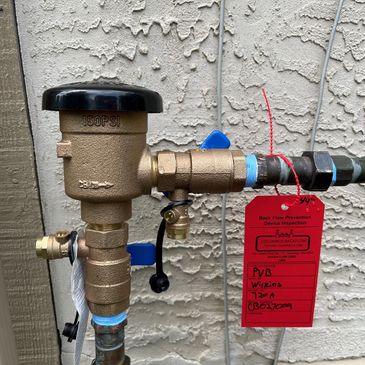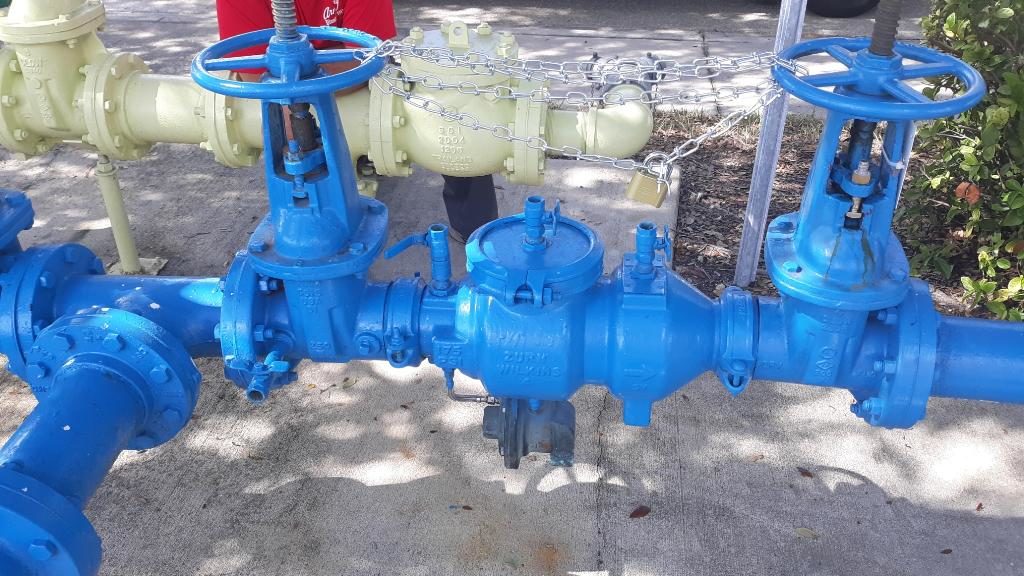Just how do you really feel in regards to Is backflow testing necessary??

Yes, you need to backflow test your house's water supply to guarantee that the water is without contaminants and also damaging levels of chemicals. You must not attempt to perform heartburn screening on your own due to the fact that of the tools needed and also area for mistake. We advise that you call an expert plumber every number of years to examine your water.
Backflow Can Impact Both You as well as Your City
Many cities develop heartburn guidelines because dangerous backflow can affect the general public supply of water along with a single building. Luckily, modern-day cities have backflow devices in position that protect the supply of water that comes from a lot of homes as well as industrial buildings. The real threat originates from irrigation systems, which can harm the supply of water with toxic plant foods, manure, and other chemicals.
What Creates Heartburn?
A regular reason of backflow is a loss of water pressure that creates the water to siphon back into the water supply. After some time, there is a loss in water stress as well as the tube starts to draw the water back into the water supply. As you can think of, there are currently chemicals from the paint that are getting in the water supply, potentially posing a risk.
Backflow Screening is Required by Law in Specific Cities
Depending on where you live, you may in fact be required by regulation to backflow examination your regulation. Iowa City keeps a document of all residential properties offered by the city's water supply. The city requires that specific "high-hazard" centers undertake heartburn testing. In many cases, houses such as houses as well as apartment are affected.
You Can Protect Against Heartburn
If you have a specialist plumber install a backflow tool, hazardous backflow is conveniently avoidable. If there is an active threat, the plumber will likewise test for backflow and identify. The main objective of a backflow device is to stop water from flowing backwards into your water system. Plumbing technicians install the tool on the pipelines in your residence to ensure that the water only moves in the right direction.
What is Heartburn?
Simply put, heartburn is when water moves upwards-- the contrary direction in the plumbing system. This is also referred to as "backpressure." When the water moves in this instructions, it can mix with dangerous toxic substances and also present a threat.
Call a Plumber to Test for Backflow Before It is Far too late
A plumbing business can swiftly test your home's water to determine if there are any kind of unsafe chemical degrees. As well as if you do discover that your water has high levels of contaminants, a plumber can conveniently mount a backflow avoidance tool.
Yes, you need to backflow test your home's water supply to guarantee that the water is complimentary of contaminants as well as hazardous levels of chemicals. Several cities develop heartburn standards because harmful heartburn can impact the public water supply in enhancement to a solitary structure. A regular reason of heartburn is a loss of water stress that causes the water to siphon back into the water supply. After some time, there is a loss in water pressure as well as the hose pipe begins to suck the water back right into the water supply. The main objective of a heartburn gadget is to avoid water from moving in reverse right into your water supply.
Backflow Testing: What Is It, and Why Is It Necessary?
What Is Backflow?
Backflow is exactly what you might imagine this somewhat gross-sounding word to mean. It is contaminated water that has reversed flow, and as a result, enters into the clean water lines of homes and businesses. Backflow is typically caused by a significant change in water pressure. This can be due to a water main break, frozen pipes or an unexpectedly high demand on the water system. It can occur at any cross-connection between clean and dirty water in residential, commercial or industrial water lines. And the worst part – backflow can contain hazardous materials like human waste, pesticides or chemicals. Needless to say, it poses very, very serious health concerns, not to mention the potential for a heap-load of expensive stress!
Backflow Prevention and Testing
In order to safeguard against backflow in standing structures, a backflow prevention device should be installed by a trusted team of professionals. Once installed, if there should ever be an unexpected or dramatic change in water pressure, the device will prevent backflow from entering into the clean water supply system. But, again, it’s important that this device is properly installed by a professional so that they can test it and ensure that the clean water line remains contaminant free. This really is key.
While personal standards and responsibilities should maintain certain routine testing requirements, there are already municipal codes in place that require annual testing of these backflow prevention devices. This ensures that they are functioning properly and that no hazardous contaminants are spilling out into the clean water supply. If, however, testing of any device is not completed on time, you should know that a property or business’ water supply might be interrupted, and the property owner might even face fines. So, to avoid this from happening to you, we recommend scheduling a backflow test well in advance.
Fortunately, here at Tritan, we can help schedule and carry out backflow testing for your property. We provide a variety of backflow-related services, including prevention device installation and testing. Call us today and make sure that this stressful problem doesn’t happen to you and your property or business.
https://www.tritan-plumbing.com/blog/2018/february/backflow-testing-what-is-it-and-why-is-it-necess/

Hopefully you liked our part about Backflow Assembly Testing. Thanks for spending some time to read through our article. Do you know another individual who is interested in the topic? Feel free to share it. Thank-you for your time spent reading it.
Schedule Free Estimate
Comments on “Do I Need to Test for Backflow in My Water”